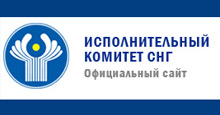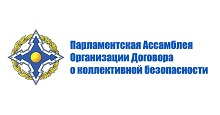The 23rd meeting of the Military Committee on military cooperation development among the CSTO member states under the supervision of the Chairman of the Military Committee, Chief of the General Staff of the Armed Forces of the Russian Federation - First Deputy Minister of Defense of the Russian Federation, Army General Valery Gerasimov, took place today via videoconferencing.
From April 8 to 11, 2024, the XXI International Seminar-Meeting on Combined Martial Arts with the heads of combat and physical training of the security ministries and agencies of the CSTO member states took place at the Park Hotel "Horizon", Odintsovo District, Moscow Region.
The event was addressed by Gennady Troislit, the Deputy Head of the Organizational and Planning Department of the CSTO Secretariat, and Oleg Ufimtsev, the President of the Russian Federation of Combined Martial Arts.
“A unit of educated partisans…”
16.03.2020
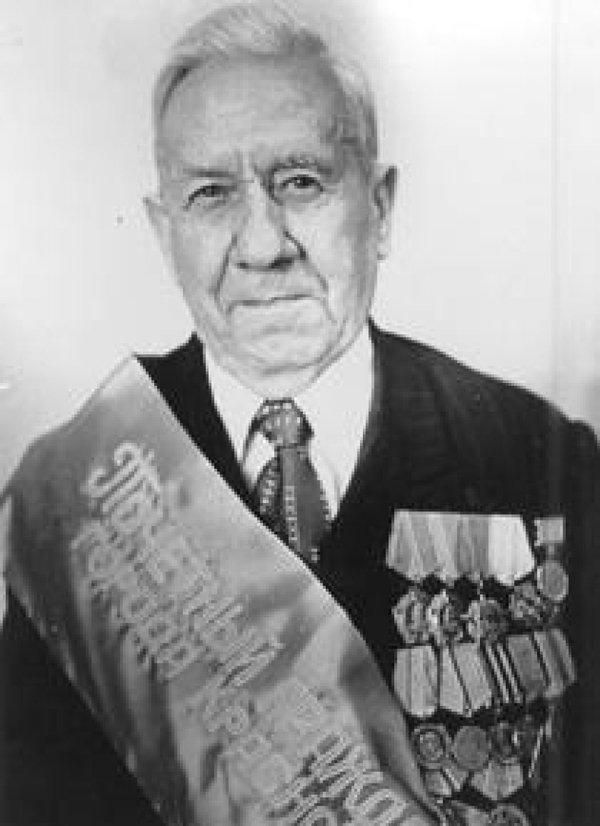
Speaking of the Great Victory of our people in the Great Patriotic War, we should not forget about the enormous contribution the Soviet partisans made to the destruction of the fascist beast. As all researchers of the Great War note, "the partisan movement unfolded throughout the occupied territory and had an unprecedented scope and effectiveness in history." And this is true - more than a million partisans and a large army of members of underground organizations were operating behind enemy lines. They were actively supported by tens of millions of Soviet patriots. During the years of fighting in the occupied territory, Soviet partisans and underground fighters destroyed, wounded and captured more than a million fascists and their accomplices, disabled more than 4 thousand tanks and armored vehicles, destroyed and damaged 1,600 railway bridges, derailed more than 20 thousand enemy trains with manpower and military equipment.
Numerous partisan units became famous for their heroic deeds and feats, all these units are worthy of separate essays and articles in the most significant encyclopedias and anthologies. Today we will tell the readers of the “Allies.CSTO” about one of such units. It will be about the Krasnodar unit of Peter Karpovich Ignatov with the codename “Batya” (“Wardaddy”). During the occupation from July 1942 to October 1943, 86 partisan units operated in the Kuban, mainly from fighters and commanders of paramilitary battalions created at the beginning of the war. But all of them taken together did not do half of what is rightfully listed on the account of “Batya” (“Wardaddy”) and his associates. It is also called "the most unusual and most productive partisan unit of the Second World War." And rightfully, at the time of the liberation of the Krasnodar Territory from the Nazis, Petr Ignatov’s fighters managed to derail 16 enemy trains with 392 cars, and in addition destroy more than 40 tanks and armored cars, 36 artillery pieces, 100 field guns, 113 trucks, 100 sidecar motorcycles and even one aircraft, also on the account of the unit of “Batya” (“Wardaddy”) more than 8 thousand killed German and Romanian soldiers, that makes it the most effective unit in World War II.
Who is “Batya” (“Wardaddy”) - Peter Karpovich Ignatov? And what was so unusual about creating a unique unit?
... Pyotr Karpovich Ignatov was born on October 10, 1894, in a In a family of a coal miner who lived in the town of Aleksandrovsk-Grushevsky, which would later be called more prosaically - Mines (Shahty)... He became an orphan early. He had to leave of school at the Marine Engineers School and go to work - he went to St. Petersburg and began working as a mechanic at the “Erickson” plant. And then - a biography in which, like in a mirror, many features of the beginning of grandiose changes were reflected. He was an active participant in the revolutionary events in Petrograd ... A Bolshevik underground worker ... He was arrested and exiled ... He was a participant in the civil war ... He was engaged in the formation of Red Guard units, in the ranks of the working militia fought with bandits. Since December 1920, he has become a member of the Military Revolutionary Committee of the Ust-Medveditsky District - he served as military commander of the railway section.
In 1923, Peter Ignatov moved with his family to the Kuban, worked in various areas of economic construction. Graduated from the Moscow Forestry Institute (now Petrovsky Agricultural Academy). Then he was a consultant to the “Glavraszhirmaslo” plant in the Kuban. By the beginning of the war, Peter Karpovich Ignatov was 47 years old, and he served as director of the Krasnodar Chemical and Technological Institute of the Oil Industry (now the Kuban State Technological University). At the enterprise, his wife and eldest son Eugene worked. The youngest son Gennady only graduated from the 8th grade, and the middle son, Valentine, served in the Crimea. Looking ahead, let's say that in the summer of 1942, “Batya” (“Wardaddy”) received the news that Valentine had died during the defense of the Crimea. And only much later, he learned that his son survived, ended up in a hospital, and then fought in the Chief Intelligence Directorate in a special forces unit. But let’s back to the Kuban ...
... Petr Ignatov was offered to become the commander of the partisan unit by the leaders of the regional party organization. Of course, those who organized the underground movement in the Kuban took into account his combat experience, human decency, education, considerable authority not only in the institute, but also in the district. And they were not deceived ... Pyotr Karpovich agreed to lead the unit, and appealed to all his subordinates to start their own war with the Nazi invaders. About fifty people responded to his call. Almost all of them had higher or secondary vocational education, and two were even a research doctorate. For those years, such a concentration of learned people was quite rare. Among the candidates for partisans were those who perfectly knew the German language. And another important distinguishing feature is that almost all of them in the past were military men - machine gunners, snipers, sappers - who left the service due to years of service or because of injuries.
Here is how Peter Karpovich Ignatov himself writes about that time in his “Partisan Notes”: “The main core of the partisan unit was selected among the engineers and technicians and among those reserved by occupation and among those demobilized from the army, we found excellent machine gunners, mortars, sappers, radio operators. We had artillerymen, and even a pilot instructor with a flight mechanic ... All of them, except for us, the four Ignatovs and Yanukevich and his wife Maria, were Kuban Cossacks. Most studied German at school and Institute. Nine of the comrades spoke German, as in Russian. Among the comrades we selected were excellent blacksmiths, shoemakers, tinsmiths, gunsmiths, joiners, builders and mechanics ... Eighty percent of our unit had higher and secondary education, the rest were highly skilled workers, mechanics and craftsmen ... ”
Interestingly, in order to stop the leak of information, Ignatov transferred his entire unit to the barracks accomodation. Together with many husbands and fathers, wives and adult children went to partisans. For example, the wife of Peter Karpovich - a medical doctor by training - headed the medical service of the future unit, the sons Yevgeny and Gennady became saboteurs.
Despite the existing military training of the future partisans, they were sent to special training centers for sabotage specialists. “We sent Kirichenko to courses in Rostov,” we are reading in “Partisan Notes” “... Kirichenko turned out to be an indispensable miner in the unit. He had a natural flair: he would examine the area and mine the not the road, no: mine some bush. "What are you doing?! - comrades are surprised. “Why would the Germans climb under this bush?” Kirichenko is humming kindly: "Their sniper will fall here, he has nowhere else to go." And rightly so: every other day we find in this place rags of gray-green overcoat and parts of an optical rifle ... ”
After the training was completed, the unit was ordered to prepare a base for itself in the Plancheskaya Gaping and prepare for the imminent arrival of the Germans. While some fighters were preparing the base and arm caches, others began to prepare explosives. As a result, several tons of it were prepared, and ingenious sapper traps became the hallmark of the Ignatov’s unit.
... The "H-hour" came on July 27, when the radio reported that our troops left Novocherkassk and Rostov-on-Don. The Nazis broke out into the vast Kuban. On that day, the unit was ordered to advance to positions and prepare for their first act of sabotage. So, another 58 people began their war with Germany. And this is how the baptism of fire of the unit went. “In the morning, the signalman reported on the approach of the enemy,” we read in the diaries of Peter Ignatov. “The armored reconnaissance vehicle was the first to appear. There is, and just in case, shoots roadside bushes from a machine gun. Behind him, slightly behind, were two three-ton cars with machine gunners. The armored car was took the lead. The forest was silent. And in the first ambush sector a three-ton truck appeared. Then Eugene and Genya quickly stood upright and threw grenades. Petrol bombs were thrown to the car.
Explosions, flashes of fire, wild screams. The survived Nazis tried to escape - but did not succeed. A machine fire burst overtook them at the side of the road. The armored car rushed forward. But around the bend in the road it was waiting for a blockage. Trying to turn back, the armored car stuck in a pre-canned masked pit. And then the German machine gunner ran out of ammo. The armored car stood in the pit, tipping to one side, and was silent. Then Eremenko joined the battle. He threw petrol bombs from the bushes into the engine, into the tower, and viewing gaps. The car broke out. Opening the door, two Nazis jumped out and fell right there, struck by bullets. The operation was over. It was necessary to leave the spot hastily ... ". In this first battle, 9 fighters of the sabotage unit has killed 48 fascists. An account of holy vengeance was opened ...
Many who spoke about this unit drew attention to the fact that Peter Karpovich “constantly urged his subordinates to observe the actions of the enemy in order to conduct sabotage as efficiently as possible. For example, when arranging an ambush, several landmines were laid at once in different parts of the road. To begin with, they blew up the first group of the enemy, but allowed several fighters to leave so that they brought help. And when help came, they blew up the others. Therefore, the unit was not afraid of tanks. If the armor arrived, it only became a victim of one of the bombs with which the road was filled, since Ignatov had plenty of explosives. Over time, mining schemes have become more sophisticated ...
Another method of destroying the enemy forces was based on mindless following the military discipline by German soldiers. For example, the “Batya” (“Wardaddy”) fighters practiced the following: having approached as close as possible to, say, a mortar position and disguised themselves, Ignatov's snipers waited for an officer to leave the dugout. As soon as he went out, a shot rang out immediately. When the shot officer fell dead - of course, two soldiers rushed to his aid. And then they were killed. And this was carried out scrupulously - exactly two soldiers rushed to the killed officer ... And after these well-aimed shots the whole mortar crew rose and ran to their position on alarm, an explosion was heard. Because partisans had already laid a mine on a possible route for mortar bombers ...
The partisans also attacked much larger enemy forces. Here is how Peter Ignatov himself writes about one such battle: “... The tank went first ... The intelligence of motorcyclists raced behind the tank ... Two companies of motorized submachine gunners appeared from behind the turn. In several rows, going close to each other, cars filled the entire highway ... Eugene quickly pulled out the safety tag of an anti-tank grenade and threw it at the head of the column. Genya hit a tail with a grenade, the commander of the first platoon, Yanukevich, in the middle. Three explosions served as a signal. On the highway, grenades one after another began to burst, a machine gun fired. A group of surviving motorcyclists, turning the car, began to leave for Smolenskaya. But Evgeny and Genya jumped out on the highway at the same time. They rushed to the trailer of a damaged motorcycle, where a German heavy machine gun stood. No wonder we studied the weapons of the enemy. The German machine gun was as obedient in the hands of the brothers as the native hand-held machine gun. A long burst of fire hit burst the air. Motorcyclists began to fall. Cars rolled to one side and lay at the side of the road.
Behind the bend of the highway, where the tank and motorcycle intelligence had gone, there was a thunderous explosion, followed by frequent rifle shots. This fascist car exploded on a mine laid by Kirichenko. Partisans of a small ambush at the last moment managed to stretch a wire over the highway. Motorcyclists cut off by this wire lay in the dust ...
“Twenty-one people participated in the operation,” Eugene reported to me. - The tank is blown up. One hundred and eighty fascists were killed. We have no losses, except for the four wounded ... "
... Partisan unit gained particular fame after the sabotage action in the stanitsa of Derbentka, where the Germans organized a large fuel depot. Partisan Maria Yanukevich, who knew German language, “tamed” the Nazis - they were used to the fact that a thin “Volksdeutsche” came to their location in search of products. And the girl each time left between the barrels of fuel a small explosive charge. One night a violent explosion thundered, and a huge mass of fuel simply burned out. The result of this diversion was the suspension of the German attack on Gelendzhik, which gave the Soviet troops a break and time to strengthen the defense of the city.
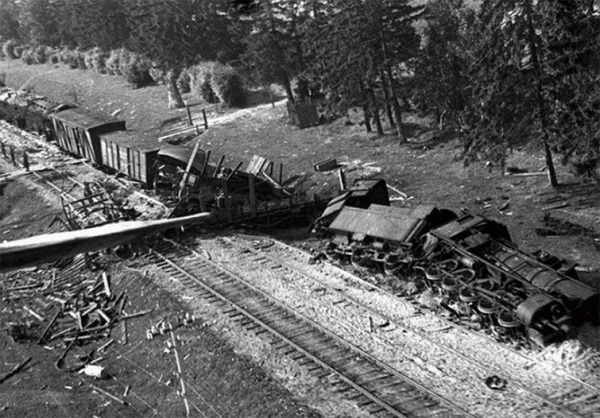
... But the main goal of the "bookish" unit was all the same echelons with enemy equipment. They were provided with well-trained guards, they had excellent cover, but, nevertheless, explosions thundered along the tracks, and the cars fell downhill ... Specialists later wrote that “the demolition workers worked in a complex manner, their goal was not only the train, but also everyone who was associated with him. Homemade bombs were planted in places where two railway tracks passed at once - the second in case the second train arrived at the place of sabotage to reload the cargo from the destroyed train. In addition, all the nearest roads were mined to destroy any units that arrived in time. As a result, dozens or even hundreds of Nazis died in a matter of hours. ”
Of course, the Nazis tried to resist saboteurs. One of such attempts is even known to us from films and books - when the Germans in front of the locomotive began to attach a couple of wagons loaded with gravel. The calculation here was to ensure that the pressure mines worked prematurely, and, in fact, the train did not get damaged. The partisans quickly answered this trick with their cunning - they began to lay five or more landmines at once, and only at the end they put a mine. When the dummy platform ran into a mine, the remaining landmines detonated from the explosion in a chain and half the train was smashed to pieces.
... The partisans acted boldly. And the god of war was often on their side. For example, once the Ignatov brothers captured a German wedge... How? Yes, in general, it was simple ... Having discovered the wedge in a single position, Evgeny Ignatov, by cunning, forced one of the tankers to open the hatch - he called himself a German soldier. But as soon as enemy soldier leaned out, he immediately got a bullet in his head. The second German tried to shoot back, but the partisans threatened to throw a grenade into the hatch, and he surrendered.
And what did the Ignatov brothers do? On a seized wedge he flew into the town, where in one of the central buildings was the German commandant’s office. Having approached the front door, they began to desperately honk. Of course, officers and soldiers began to run out of the commandant’s office to find out what was happening. And then Gennady Ignatov opened deadly fire from a machine gun. Here is such a daring raid ... By the way, they were lucky then - when the brothers on this wedge left the town, they were fired from cannons. And one shell damaged the chassis. But the heroes managed to get to the base ...
However, it wasn’t always lucky ... War is war, and even the most talented and trained are not immune from trouble. And in one of the episodes of the rail war, the sons of Pyotr Karpovich Ignatov, Yevgeny and Gennady, were killed ... Eyewitnesses later said that “they had to lay landmines under the rails of the next train, but, contrary to all safety standards, it developed a full speed and did not go according to schedule. Probably, the machinists intended to slip through the dangerous section. The guys could simply postpone the sabotage, but they knew that there were more than five hundred German soldiers on the train. A wreck at such a speed would not leave anyone alive, and the brothers blew up the train at the cost of their own lives. ”
It is noteworthy that after this incident the German command simply went into rage - after a few days all the officers responsible for the security of the passage of the train were executed. Eugene and Gennady Ignatov were awarded the title of Heroes of the Soviet Union. Posthumously…
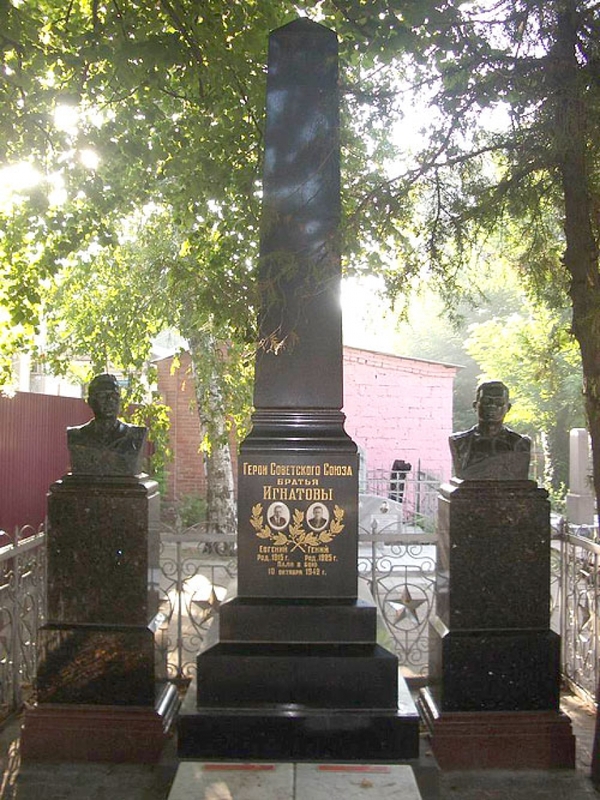
But losses in the unit were rather the exception. For the entire duration of the battles, the “Batya” (“Wardaddy”) lost only five members, and on the other side of the scale, we repeat – there are more than 8 thousand Nazis killed, 16 trains, more than 40 tanks and several hundred cars, motorcycles and armored cars. No partisan unit had a similar ratio of losses and damage inflicted.
... After the war, most of the soldiers of the unit returned to their jobs. The Ignatov brothers were buried in Krasnodar at the All-Saints Cemetery. Peter Ignatov himself continued his work on the party line, became a deputy of the Supreme Soviet of the USSR, and in his spare time he wrote books about his life, the war and the exploits of his loved ones. Peter Karpovich died in 1984 at the age of 90. After his death, the museum-apartment of the Ignatov family became a branch of the Krasnodar Regional Children's Library ...
Vladimir Popov


